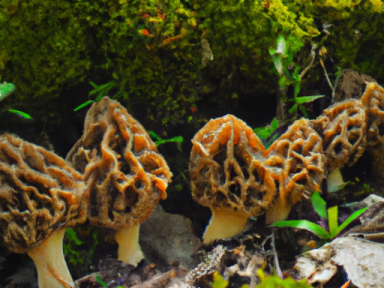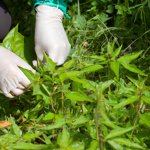
Foraging Morels: A Guide to Finding and Enjoying this Wild Delicacy
When it comes to foraging for food, there are few treasures as sought after as the elusive morel mushroom. Known for their distinct honeycomb-like caps and earthy flavor, morels are a delicacy that can be found in the wild if you know where and how to look. In this guide, we will cover the identification, best hunting spots, and culinary uses of morels, empowering you to venture into the wilderness with confidence and fill your basket with this prized edible.
Identification
Before setting out on your morel hunting expedition, it is essential to familiarize yourself with the key characteristics that define these mushrooms. Morels have a unique appearance that sets them apart from other fungi:
- The cap of a morel is cone-shaped, with a wrinkled and spongy texture. It can range in color from light tan to dark brown.
- The cap is attached to a thick, hollow stem that is either whitish or yellowish in color.
- The interior of a morel is completely hollow, unlike other mushrooms that have a solid center.
It is important to note that while morels are generally safe to eat, there are several species of false morels that can be toxic. Therefore, it is crucial to consult a reliable field guide or seek guidance from an experienced forager to ensure you are confidently identifying true morels.
Finding the Best Hunting Spots
Now that you can confidently identify morels, it’s time to discover where they like to hide. Morels are typically found in forested areas, particularly near decaying hardwood trees. Look for the following optimal hunting spots:
- Old orchards or areas that were once inhabited by fruit trees.
- Around dead or dying trees, especially those with bark that is falling off.
- Near ash, elm, or oak trees.
- In areas that have recently experienced wildfires.
It is important to remember that morels have a symbiotic relationship with the environment, so ensure you forage responsibly and only collect what you intend to consume. Leave some mushrooms behind to allow for future growth and the continuation of this sustainable practice.
Culinary Uses
Morels offer a depth of flavor that can enhance a wide variety of dishes. Whether you’re a seasoned chef or a novice cook, you can experiment with these culinary ideas:
- Sauté them in butter and garlic for a simple yet savory side dish.
- Slice and add them to stir-fries or pasta dishes for an earthy and robust flavor.
- Include them in creamy sauces or soups to elevate the taste to a whole new level.
- Grill or stuff morels for a unique and delicious appetizer.
- Dry or preserve morels to enjoy their flavor year-round.
Remember to thoroughly clean and inspect your morels before cooking, as they may harbor dirt or small insects. Enjoy the bountiful rewards of your foraging expedition, savoring the flavors of nature’s gift.
Conclusion
Foraging for morels is an adventure that combines the thrill of the hunt with the satisfaction of knowing you are gathering a delectable and nutritious food from the wild. By arming yourself with the knowledge of identification, seeking out the best hunting spots, and exploring the culinary potential of morels, you can embark on a journey of self-reliance and reap the rewards of nature’s bounty. So, equip yourself with a sturdy basket, a reliable field guide, and an adventurous spirit, and set out to discover the hidden treasures of the forest.



GIPHY App Key not set. Please check settings